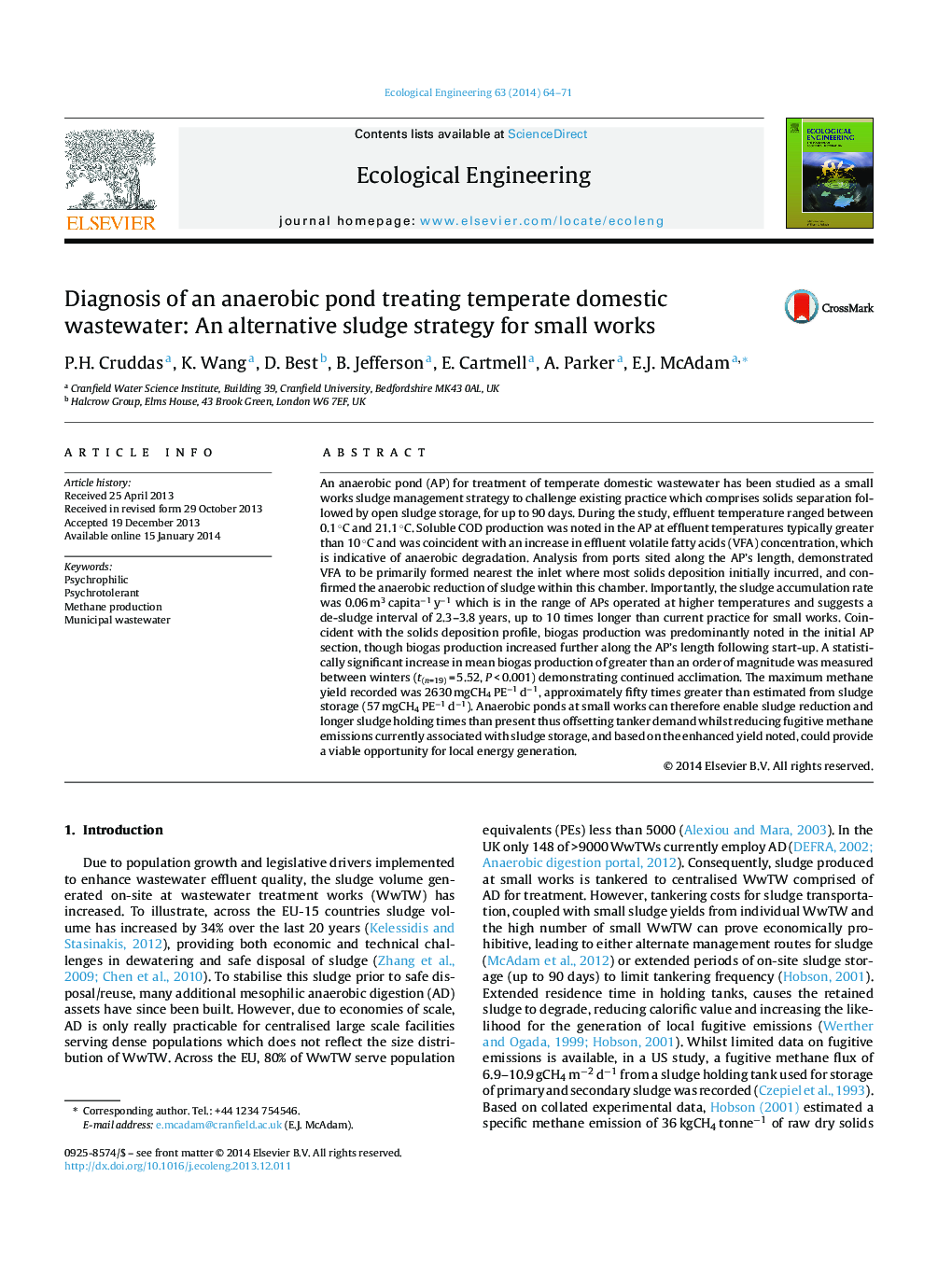| کد مقاله | کد نشریه | سال انتشار | مقاله انگلیسی | نسخه تمام متن |
|---|---|---|---|---|
| 4389619 | 1618036 | 2014 | 8 صفحه PDF | دانلود رایگان |
• Anaerobic ponds are resilient option for temperate wastewater treatment.
• Anaerobic ponds present a sustainable alternative to existing small works sludge strategy.
• Based on methane yields, anaerobic ponds could enable energy production at small works.
An anaerobic pond (AP) for treatment of temperate domestic wastewater has been studied as a small works sludge management strategy to challenge existing practice which comprises solids separation followed by open sludge storage, for up to 90 days. During the study, effluent temperature ranged between 0.1 °C and 21.1 °C. Soluble COD production was noted in the AP at effluent temperatures typically greater than 10 °C and was coincident with an increase in effluent volatile fatty acids (VFA) concentration, which is indicative of anaerobic degradation. Analysis from ports sited along the AP's length, demonstrated VFA to be primarily formed nearest the inlet where most solids deposition initially incurred, and confirmed the anaerobic reduction of sludge within this chamber. Importantly, the sludge accumulation rate was 0.06 m3 capita−1 y−1 which is in the range of APs operated at higher temperatures and suggests a de-sludge interval of 2.3–3.8 years, up to 10 times longer than current practice for small works. Coincident with the solids deposition profile, biogas production was predominantly noted in the initial AP section, though biogas production increased further along the AP's length following start-up. A statistically significant increase in mean biogas production of greater than an order of magnitude was measured between winters (t(n=19) = 5.52, P < 0.001) demonstrating continued acclimation. The maximum methane yield recorded was 2630 mgCH4 PE−1 d−1, approximately fifty times greater than estimated from sludge storage (57 mgCH4 PE−1 d−1). Anaerobic ponds at small works can therefore enable sludge reduction and longer sludge holding times than present thus offsetting tanker demand whilst reducing fugitive methane emissions currently associated with sludge storage, and based on the enhanced yield noted, could provide a viable opportunity for local energy generation.
Journal: Ecological Engineering - Volume 63, February 2014, Pages 64–71
